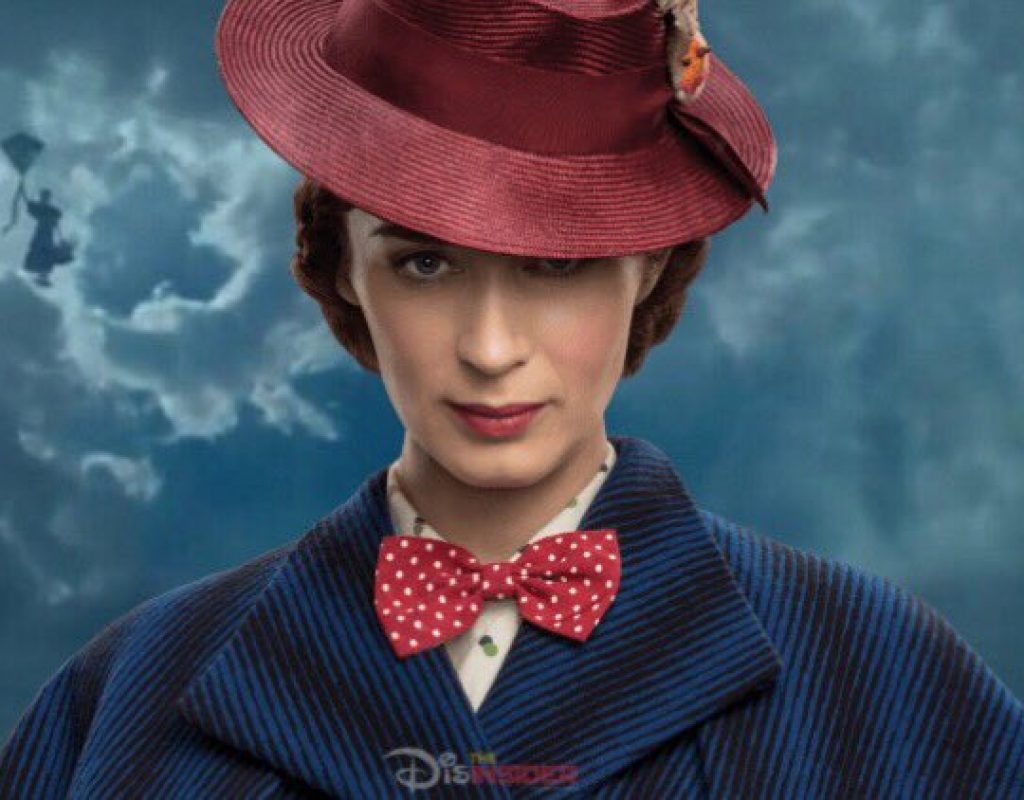Wyatt Smith, ACE has edited films including Nine, Pirates of the Caribbean: On Stranger Tides, Thor: The Dark World, 300: Rise of an Empire, and Doctor Strange. He was also nominated for an ACE Eddie for Best Edited Feature Film – Comedy/Musical for Into the Woods and an Emmy for the Tony Bennett: An American Classic special.
Art of the Cut interviews Wyatt for his latest project – Mary Poppins Returns.
(This interview was transcribed with SpeedScriber. Thanks to Martin Baker at Digital Heaven)
HULLFISH: Rob Marshall is somebody you’ve worked with before. Tell me a little about that relationship and how you got to know him.
SMITH: It’s really been an evolution over the last 12 years. We first met on a Tony Bennett project for NBC. A lot of my career at that time was working strictly in music: music videos, music docs and a lot of concert editorial. Rob had been approached to do this special about Tony Bennett’s life and it was for network TV, and even though he had his whole film team, I had worked with the Bennett family and the TV producers were kind of hoping that they might find an editor for him that would bridge the worlds, or at least understand how TV formatting and schedules and stuff work. It’s quite different from film. I interviewed for the job and Rob and I got along. He hired me and we had an amazing time making that show. And then he pulled me into feature films. I had never cut narrative before. So thankfully the first two films I cut with him were Nine, which I co-edited with Claire Simpson as the lead editor, and then the fourth Pirates Of The Caribbean: On Stranger Tides, which I co-edited with David Brenner. Also, Jim Clark was involved in the beginning of Nine as well. What was great was, not only did I get a break into film, but I had three unbelievably talented, Oscar-winning editors to teach me how to even begin to approach it.
And then that relationship’s evolved and thankfully it’s just gotten better and better. We understand each other’s tastes. Rob has such a clear vision of what he’s trying to make all the time. He’s definitely closed his eyes and watched the whole movie long before he’s probably even cast it. Not that he’s not open for it all to evolve and change and do all the things that a film will. But I know that there’s this image in his head and I’m able to get that film on the screen much much quicker so that we can then do the work together that creates the final film. There is a great shorthand there and I see the value of these long-term director-editor relationships. I will work with Rob as long as he’ll have me and I definitely see the benefits of us continuing to work together. And I love working.
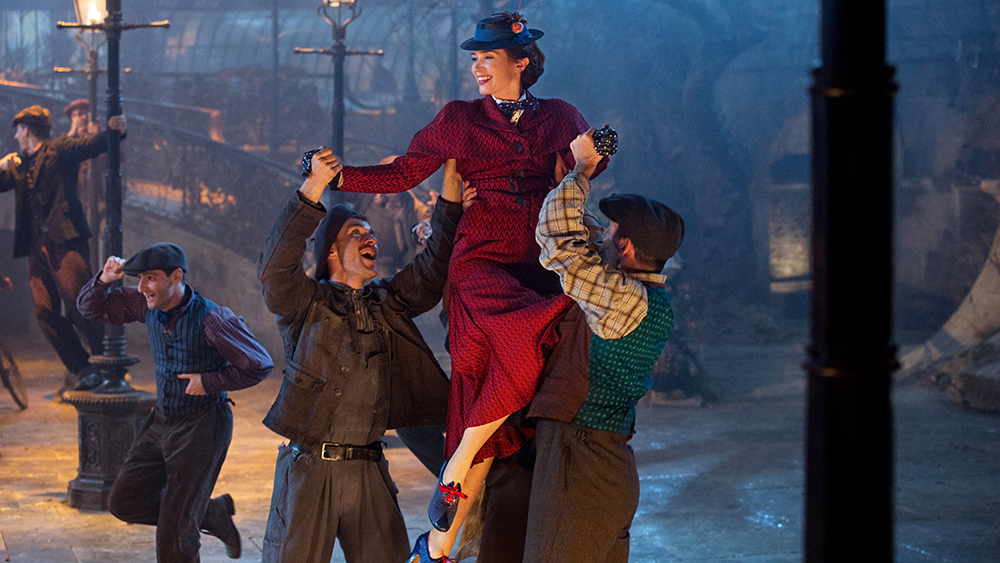 HULLFISH: I’m near the end of a film right now with a director whom I’ve worked with now for three films, and I agree that there is a sense that I can experiment a bit more and because of our history, even if I don’t get it right, he knows that I’ll get there eventually.
HULLFISH: I’m near the end of a film right now with a director whom I’ve worked with now for three films, and I agree that there is a sense that I can experiment a bit more and because of our history, even if I don’t get it right, he knows that I’ll get there eventually.
SMITH: It’s that but it’s also the subtleties, where — especially on a big film like Poppins where we’re shooting three cameras most of the time, even for scene work, and then when you get to the dance numbers we’re shooting five cameras and you can end up with an absolute mountain of material. I can see his intentions very clearly. I’m still going to watch every frame of everything and dig out what I can but at least I’m not sitting there going, “what is he trying to do here?” It’s much clearer.
HULLFISH: So I have two questions about just that answer. One is: you said you could see his intention. Where’s the balance between: “I know what he’s going for” and “I have a voice as an editor that I also want to show him.”.
SMITH: Well every film is different. Every director is different. Yes, editors have their own style, but right from the get-go I’m serving the director’s vision so I’m most likely to present what I feel the director’s going for. And I just keep mountains and mountains of subs, so that once the director has seen it then I can say, “But what about this approach?” On some scenes, I might push for what I see, but for the most part that very first time I’m really trying to see that I’m aligning with the director.
Because then the trust is there right away and everything can be an easy conversation. If you go off the rails and do your own thing right away it can scare a director, rightly so, that you’re just trying to do your own thing. So it’s a collaboration.
HULLFISH: You mentioned how many cameras there are on some of these production numbers for sure and even on set work, but you said, “I watch every frame.” How do you do that?
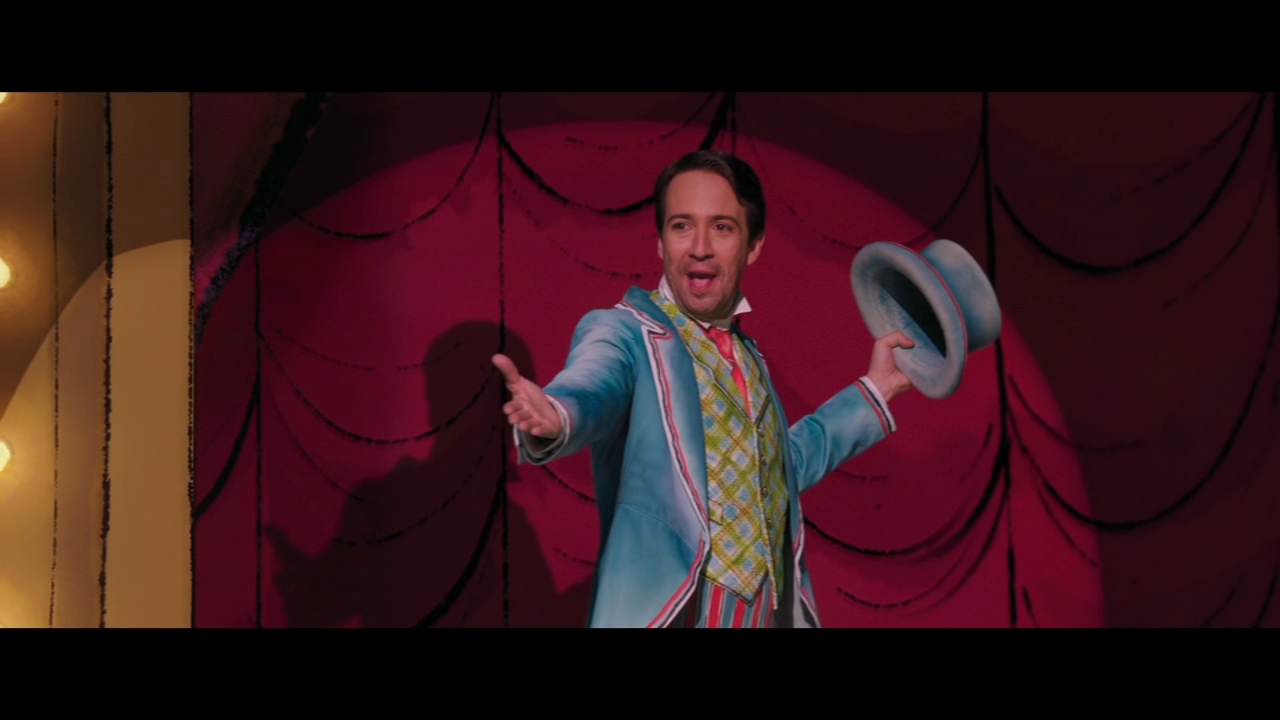 SMITH: During production, my hours are kind of insane. And when the films can afford it and it’s reasonable, I often like take an extra day working each week. If it’s a five day shooting week during production, I try to insist on a sixth day as part of the plan. I want to be able to make myself available if costume has a question; if production design needs something; if I’m wanted on set. I am serving the needs of the second unit. I certainly spend a lot of time with them, so I tend to go in very early to do screening and then I stay late at night to do the actual cutting because during the day you run around and you don’t have that focused train of thought. And then I try to get that extra day when it’s allowed so that I can really do the actual real cutting.
SMITH: During production, my hours are kind of insane. And when the films can afford it and it’s reasonable, I often like take an extra day working each week. If it’s a five day shooting week during production, I try to insist on a sixth day as part of the plan. I want to be able to make myself available if costume has a question; if production design needs something; if I’m wanted on set. I am serving the needs of the second unit. I certainly spend a lot of time with them, so I tend to go in very early to do screening and then I stay late at night to do the actual cutting because during the day you run around and you don’t have that focused train of thought. And then I try to get that extra day when it’s allowed so that I can really do the actual real cutting.
So I go in super early and just start screening. I won’t cut because the assistants haven’t prepped the material. I just take what the lab has processed and I start screening and taking in those images for the first time.
HULLFISH: So since the assistants haven’t done anything at that point, are you just taking notes on paper? Are you doing locaters? Or are you just literally letting it wash over you?
SMITH: Well the thing is I have a great team, and on Poppins, it’s a pretty big team. They can get through that material pretty fast, so I can watch it, then deal with whatever the set needs are for part of the morning and then I can sit down and cut before I forget what I’ve seen.
HULLFISH: When you’re working on such a joyous and celebratory film, like this one, is it different than some of the others that are more dark? Is your life different?
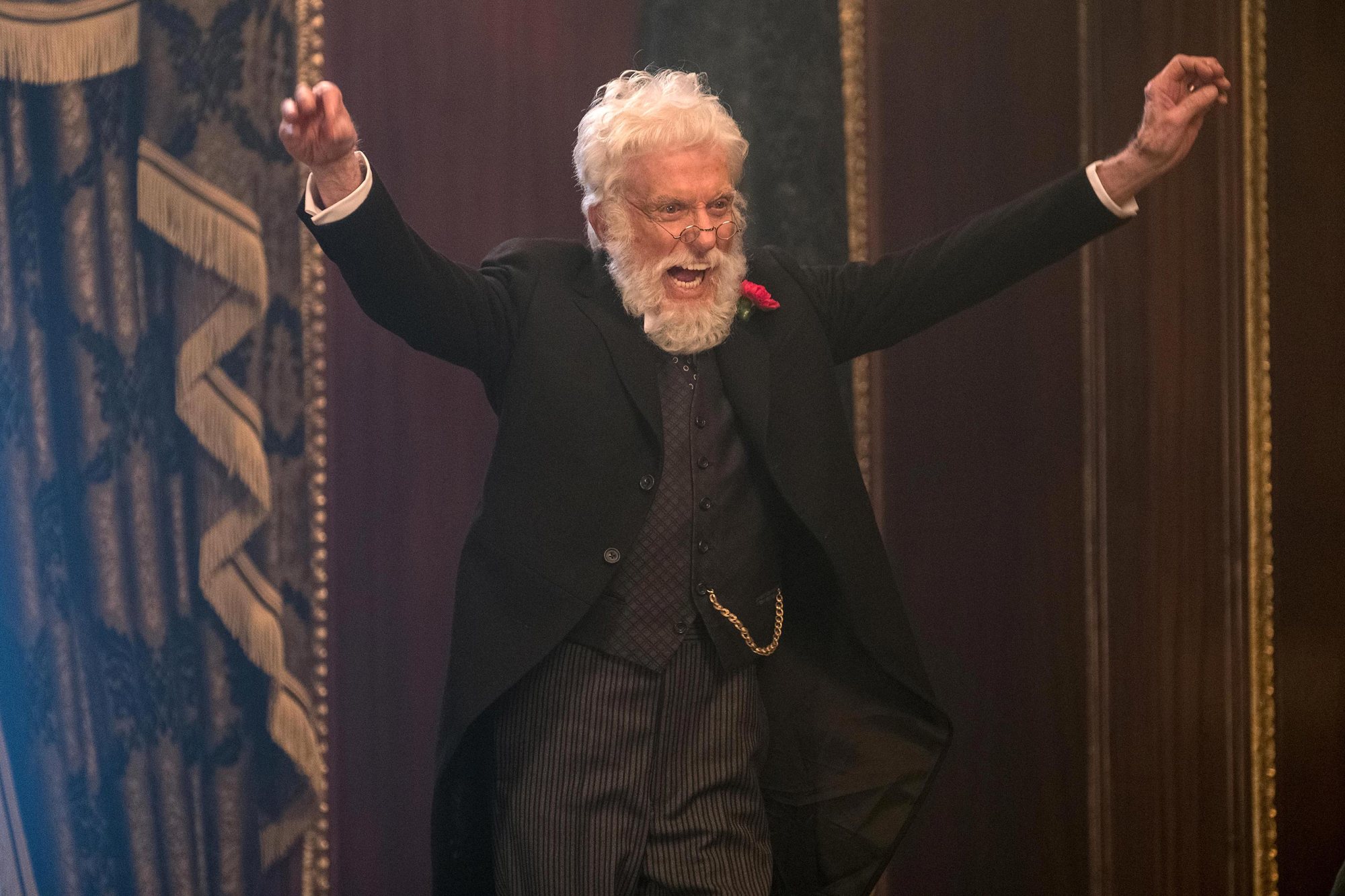
SMITH: I will say that Poppins has been a particularly special film. The tone of this has been amazing. We all know how daunting this is because it’s sacred ground to walk on — the original Mary Poppins. In a way, films can be like children: if you swear around your kid, your kid’s going to swear. So there was a lot of love around this film and channeled into every frame. There were a lot of tears on-set. Endless laughter. It sounds like such a publicity thing to say but it is complete truth that even the big construction guys, they were humming and singing songs. It really had that feeling over everybody.
For anybody who’s ever seen the original film, to get to physically stand on the set of 17 Cherry Tree Lane, this is special stuff. Not to mention that we had kids on set. Joel was 7. I think Pixie and Nathaniel were both ten or maybe 11. And there’s also a sort of mindfulness of that and playfulness that comes from having kids around. Joel — who played Georgie — has never acted. All of that just created a really fun atmosphere. And then on the intense days — like shooting “A Conversation” with Ben Whishaw, you could hear a pin drop because we’re all invested in what’s going on. This one was particularly special.
Right now, I’m working in a film for Focus about Harriet Tubman — and slavery is not a super fun subject. But the director is Kasi Lemmons and I see the vibe that she creates on set with her crew and there’s a lot of love there and a lot of passion and she is incredibly focused. Just because the subject matter is slaves in a field doesn’t mean that everybody should be miserable.
HULLFISH: I was just talking to Plummy Tucker, who cut Destroyer, and she was talking about how difficult it was to be in the character’s headspace because the character is incredibly damaged. So, is your life more pleasant when you go to work than on a film with darker or more disturbing subject matter?
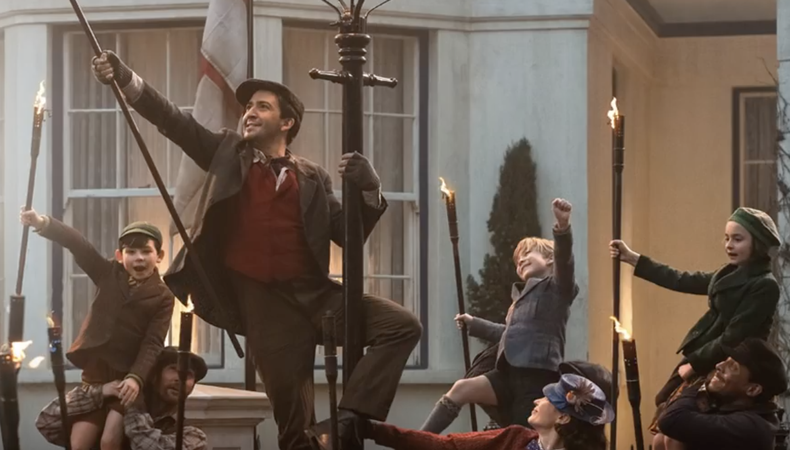 SMITH: The nice thing is I’ve been working in New York. In the case of 300: Rise of an Empire, where I was away from home the entire time — we were in Bulgaria while shooting and then I was editing in L.A. where I have a lot of friends but I don’t live there — that gets harder. What happens in New York is I live in Brooklyn but I don’t take the subways or cabs. I walk to the city every day, rain or shine or snow. I walk over the Brooklyn Bridge or the Manhattan Bridge and that’s what protects my life from my work. On m walk to work, I’m thinking about what I’m doing. I’m getting into the headspace of — for instance — cutting Harriet, which is tough. It’s really intense. But by the time I get to work, I’m completely in that mode. I’m focused and I sit down and I go straight to work. And then in the evenings, having that hour walk buffer, I’m able to release it and clear it and think about it so that when I’m home I’m not in that dark cloud of slavery. So it helps.
SMITH: The nice thing is I’ve been working in New York. In the case of 300: Rise of an Empire, where I was away from home the entire time — we were in Bulgaria while shooting and then I was editing in L.A. where I have a lot of friends but I don’t live there — that gets harder. What happens in New York is I live in Brooklyn but I don’t take the subways or cabs. I walk to the city every day, rain or shine or snow. I walk over the Brooklyn Bridge or the Manhattan Bridge and that’s what protects my life from my work. On m walk to work, I’m thinking about what I’m doing. I’m getting into the headspace of — for instance — cutting Harriet, which is tough. It’s really intense. But by the time I get to work, I’m completely in that mode. I’m focused and I sit down and I go straight to work. And then in the evenings, having that hour walk buffer, I’m able to release it and clear it and think about it so that when I’m home I’m not in that dark cloud of slavery. So it helps.
HULLFISH: Wow. I love that. You also mentioned how early you get to work.
SMITH: It really varies. On Poppins, we had a very long post-production schedule, so that wasn’t so bad. My days were mostly 8 to 8 or 8 to 9. During shooting that’s completely different. I’m there at 6 or 6:30am and leaving at God-knows-when. But, the hours in the day don’t define the work as we all know. You can be there for 16 hours but in a complete block and nothing gets done. You can have four hours by yourself on a weekend and do a week’s worth of work.
HULLFISH: You’ve done a bunch of music projects. And this film is very musical. Can you talk to me about your ability or skill or love of music?
SMITH: The circumstances for how I first started to cut were bizarre but it was on a music project for Mariah Carey. Before that, I’d been more technical. I’d been teaching linear tape editors how to use Avid. And in being thrown into this Mariah Carey concert, I realized that I knew how to edit technically, but not creatively. I had no idea what to cut. I think I might have been fired off that job after just a couple of days. I hadn’t yet discovered the storytelling aspect of the music.
That’s what’s translated so well into narrative where you realize that in a musical, your songs are your scenes. And in a concert, how you display the music, how you put the audience onstage with the musician, not just living in close up the whole time so when you use that close up and suddenly the real meaning of that song comes through and resonates with an audience, where you can find all the nuances and craftsmanship in what a band’s performing and how you choose to highlight that.
Like, there could be this whole big drum thing going on, but that there could be these amazing little bass runs, so you cut to that bass player and suddenly your ears tune in to this whole other thing.
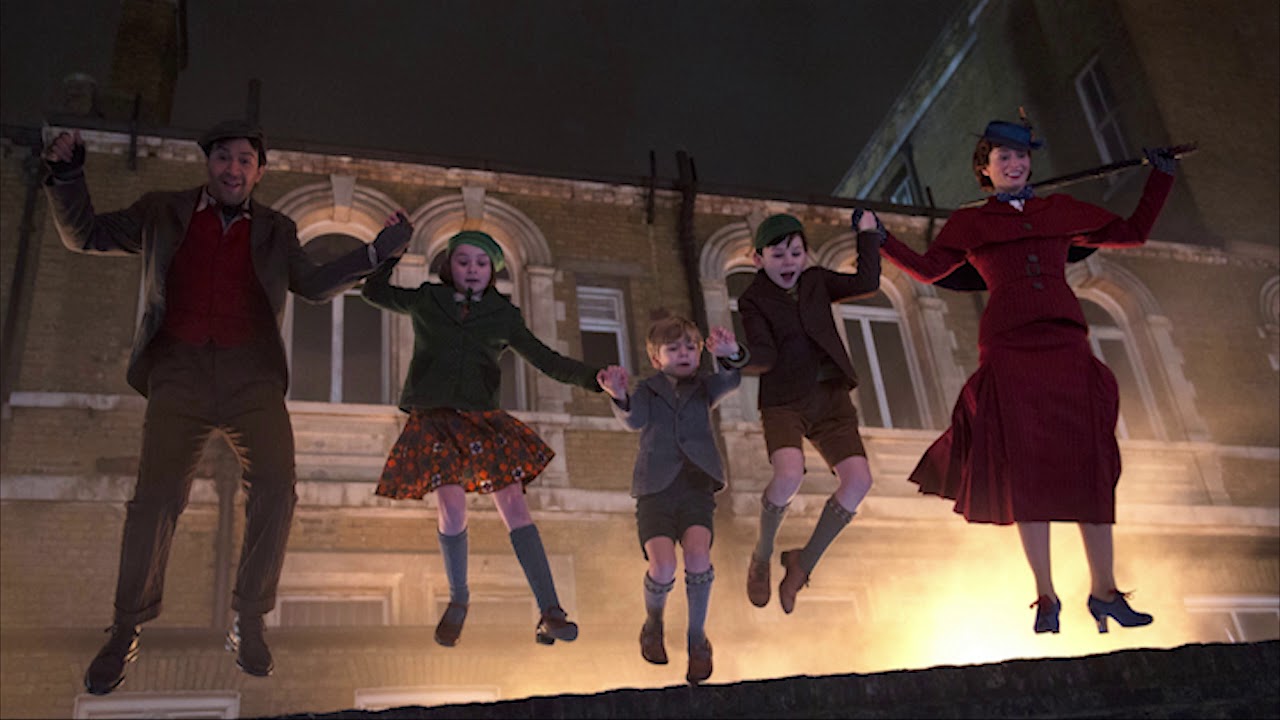 Then I started to understand that it’s all storytelling, and there are many different ways to read it. I can read a children’s book in the driest, most monotonous tone or I can be more expressive. Or I could play the characters in voices. It’s no different than that. There are many different ways to tell a story visually. And music is absolutely no different. And when you get to musicals you realize it’s actually harder storytelling, because it’s a completely unnatural art-form. It’s one thing to be an amazing singer and to be onstage and to perform a concert. Or to be an actor in a theater on stage delivering an incredible monologue. But to sing dialogue or to be speaking and then suddenly start singing is an incredibly unnatural thing. It’s great to have toes in both sides of it. Rob and I — especially on the musicals — have to spend a lot of time earning the entrance to a song, and doing it in a way so suddenly when somebody starts belting something out, it’s not jarring. It’s finding that nuance of weaving those words into song. So I think the music stuff has helped me a lot in the narrative, even when it’s not musical.
Then I started to understand that it’s all storytelling, and there are many different ways to read it. I can read a children’s book in the driest, most monotonous tone or I can be more expressive. Or I could play the characters in voices. It’s no different than that. There are many different ways to tell a story visually. And music is absolutely no different. And when you get to musicals you realize it’s actually harder storytelling, because it’s a completely unnatural art-form. It’s one thing to be an amazing singer and to be onstage and to perform a concert. Or to be an actor in a theater on stage delivering an incredible monologue. But to sing dialogue or to be speaking and then suddenly start singing is an incredibly unnatural thing. It’s great to have toes in both sides of it. Rob and I — especially on the musicals — have to spend a lot of time earning the entrance to a song, and doing it in a way so suddenly when somebody starts belting something out, it’s not jarring. It’s finding that nuance of weaving those words into song. So I think the music stuff has helped me a lot in the narrative, even when it’s not musical.
HULLFISH: How difficult is it to negotiate that transition, editorially, from the relative realness of a dialogue scene and the fantasy of a singing scene? How do you “earn that?”
SMITH: It varies greatly on the type of song. There are times where you can be pretty bombastic if you’re going for something big and you let the actor make the transition right there on screen. The most perfect one in Mary Poppins Returns is when Mary starts singing “Can You Imagine That.” That’s a perfect transition. A lot of it is in the writing and with the lyrics by Marc Shaiman and Scott Whitman. The children ask a question and Mary turns around with the answer: “John. You’re right. It’s good to know you’re bright.” So it’s almost spoken but it’s kind of sung but the song is beginning with the answer to a question directly. That’s a perfect way to do it. “A Conversation” is a very challenging song, because it’s Ben Whishaw all alone. And he finds the jewelry box with his late wife’s necklace and then he sings this song to her. That’s a very delicate one as it’s so exposed so it’s finding just the right amount of time and under score to prepare you for that first lyric.
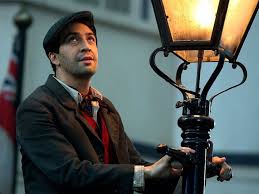 HULLFISH: Can you talk about what you meant by “earning” entry into a song?
HULLFISH: Can you talk about what you meant by “earning” entry into a song?
SMITH: You have to be ready for a song. In other words, because that song is going to now be the dialogue of what this character is feeling or what we’re meant to learn. Scenes are spoken in a language like a conversation, whereas songs are sung, they’re melodic. You receive the information differently. So the important thing is making sure that the scene dialogue kind of poses that question that the song is then going to answer or whatever the actor is going to express — that we understand all the circumstances before. Because the worst thing you can do is have a dialogue scene that says something and then have a song say the same thing. That’s what I mean by earning it. You want just enough of a scene as a set up for the song that is the payoff — as if it was the rest of the scene and dialogue. Sometimes in the writing, they are a bit doubled-up, and then we decide to pull some dialogue because she’s about to sing that. You don’t want to be ahead of the song. You’ll disengage or it creates that little bit of impatience in the audience. So that’s more the earning factor.
HULLFISH: Any editing inside the songs? That can be tricky — not rhythmically, but with things that are missed or emotion that jumps.
SMITH: Well cutting a verse out of a song is — there are times that we’ve done it — but you do have to think of it as your scene work. You have to think about it like, “Oh, they walk in a room, they start to talk, and then suddenly we cut to the door and them leaving.” Something has to happen that you can’t just jump past. You have to treat the lyrics of a song as being as meaningful as any dialogue.
HULLFISH: You’ve edited some gigantic films and this is no exception. What are some of the challenges of managing a project of this size and editing on that massive scale?
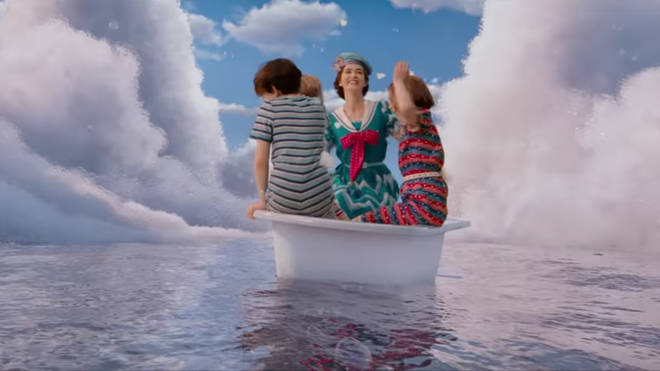 SMITH: Experience helps. The first big VFX thing I worked on was a Pirates film and to work with David Brenner — who did so many of the big disaster movies — to have his guidance of how to just imagine what’s there. And then Marvel challenges you so much. But thankfully I have a comfort in that virtual world: green screens and blue screens; working with previs and postvis and storyboards. So experience is a tremendous help for that. It’s great to have a decent sized team. I had a First Assistant Editor and two-second assistant editors at all times. And while we were shooting I had a visual effects editor and an additional visual effects editor once we were in post. You can use that team to really help you. It can be something as simple as: I set up a green screen for the underwater sequence in Mary Poppins; I get a cut of it that’s feeling pretty good. And then I have a team that can actually go in and help temporarily paint out the wires and stuff, so by the time I’m working with Rob, I actually had a pretty nice clean representation of what it’s going to look like with some temp backgrounds from the postvis Department.
SMITH: Experience helps. The first big VFX thing I worked on was a Pirates film and to work with David Brenner — who did so many of the big disaster movies — to have his guidance of how to just imagine what’s there. And then Marvel challenges you so much. But thankfully I have a comfort in that virtual world: green screens and blue screens; working with previs and postvis and storyboards. So experience is a tremendous help for that. It’s great to have a decent sized team. I had a First Assistant Editor and two-second assistant editors at all times. And while we were shooting I had a visual effects editor and an additional visual effects editor once we were in post. You can use that team to really help you. It can be something as simple as: I set up a green screen for the underwater sequence in Mary Poppins; I get a cut of it that’s feeling pretty good. And then I have a team that can actually go in and help temporarily paint out the wires and stuff, so by the time I’m working with Rob, I actually had a pretty nice clean representation of what it’s going to look like with some temp backgrounds from the postvis Department.
And all the sound work the assistants do. They make it all feel so real and so complete at such an early stage. And so that’s tremendously helpful in sharing some of that workload. I’m not trying to dial all that in myself. In terms of the moving parts of it though, I spend every morning and every night checking in with visual effects. And that’s true of any film I’ve worked on with visual effects. I believe that editorial needs to be an open door to VFX, because what ends up happening is — if you close that door — they don’t know what’s going on. The schedule of your film will shockingly become beholden to them, and they’re inclined to not show you stuff in it’s early days.
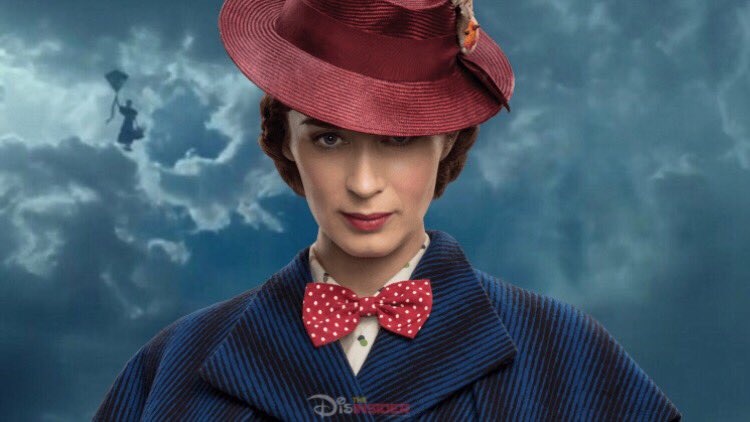 Every day, even if I just have a conversation — on Poppins with Rob or with Scott Derrickson on Dr. Strange — even when you start to sense that something’s going to change, I let VFX know: “we might change takes here” or “we might be losing this whole section.” That’s usually scary for them, but it’s better than them finding out six weeks later. So communication on the big films is what makes it work. Every morning and every night on Poppins, I met with Matt Johnson, our visual effects supervisor and Leslie Lerman, our VFX producer. There’s not a day that we don’t talk to each other about what’s going on. And what’s great is that they’re showing me their work early so I can help guide them towards what Rob’s going to want. I can help hem get closer to Rob’s intentions before they present to him so it’s that much better when they do.
Every day, even if I just have a conversation — on Poppins with Rob or with Scott Derrickson on Dr. Strange — even when you start to sense that something’s going to change, I let VFX know: “we might change takes here” or “we might be losing this whole section.” That’s usually scary for them, but it’s better than them finding out six weeks later. So communication on the big films is what makes it work. Every morning and every night on Poppins, I met with Matt Johnson, our visual effects supervisor and Leslie Lerman, our VFX producer. There’s not a day that we don’t talk to each other about what’s going on. And what’s great is that they’re showing me their work early so I can help guide them towards what Rob’s going to want. I can help hem get closer to Rob’s intentions before they present to him so it’s that much better when they do.
HULLFISH: I interviewed David Brenner and I can totally see the two of you guys loving each other.
SMITH: He has just an unbelievable sense of humor, but he is also such a hard worker. He dives so deep into the scenes he works on. And what’s also great is any assistants who have worked with him over the years I can immediately spot.
HULLFISH: Interesting.
SMITH: David is really intense about the sound work that’s added to his scenes. Things that most editors will do by the finish line — like maybe in a break in dialogue putting a little distant “car by” in between that little pause just creating these sonic soundscapes that are so specifically tailored to the dialogue. I can tell because that’s definitely David. He REALLY sculpts those soundscapes from day one to be so complete. I love it and whenever I’m able to work with an assistant that’s worked with him in the past, I start handing them scenes and asking them to dial up the sound for me.
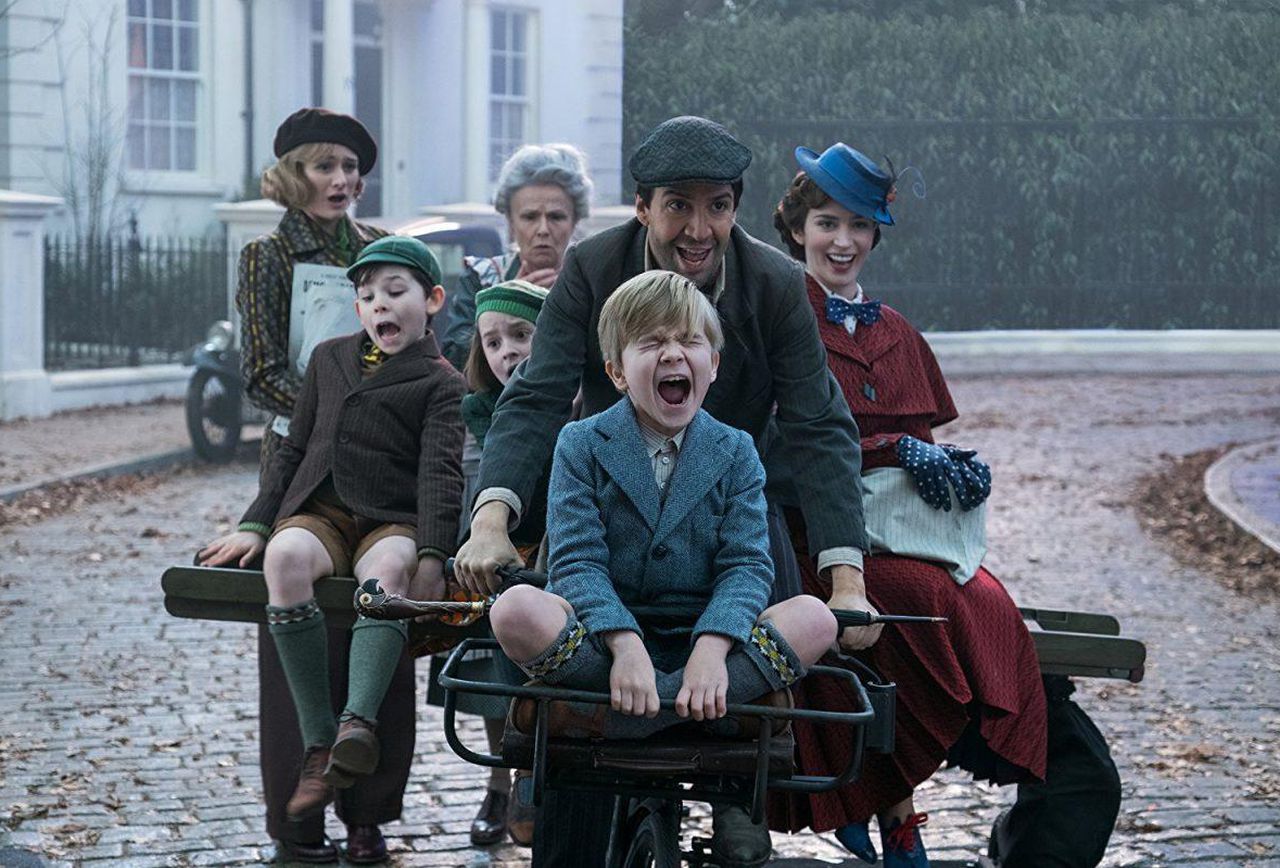 HULLFISH: “Brenner” this for me.
HULLFISH: “Brenner” this for me.
SMITH: Exactly. In fact, I think Tom Lane — who was on Justice League and who came on and helped us towards the end of shooting Poppins — he was one of those assistants and I think I even used “Brenner” as a verb.
HULLFISH: So the other thing I noticed on your imdb page is that you go from these massive films and then you do little short films. What do those do for you? Why do you do them?
SMITH: Well I haven’t done a lot of shorts, but oddly enough right as we were finishing Poppins I cut two shorts. One was a contest for a very dear friend who also worked on Poppins. She won one of these contests where – in three hours – you have to shoot a short film and in a week you have to turn it in. And I told her, “You have this whole team here. Let’s do this.” It was a fun little challenge. It had to be shot on a phone. Whereas my friend Scott’s short — Metronome in Time — he’s a very old friend and it’s an interesting film because it’s almost silent. There isn’t any dialogue. And so there was a challenge to that and I wanted to help him. A lot of it is wanting to move a different muscle. If I only did musicals that would be fine but I find changing perspective, even working with other directors than Rob, I learn so much more. You learn the things that you can appreciate about someone’s work or be critical of that work and you just get a broader range. It’s like a wider education.
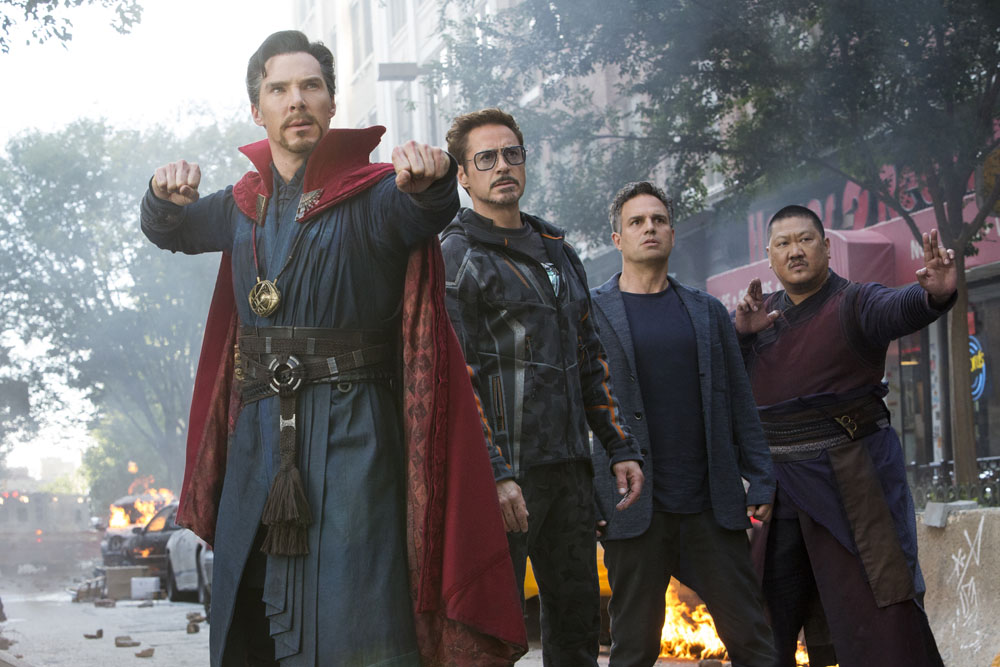
Having gone from Doctor Strange straight into Poppins, I’m doing the Tubman film because I wanted to find a narrative drama. Not a musical film. Not a VFX based film, just to have that change in perspective; to try something different to see if I’m any good at it. But also wanting to be well-rounded. I had an opportunity to work with Jonathan Demme a few years ago before he passed. It was a film called Ricki and the Flash and even though it was very musically based — it had Meryl Streep in a bar band as this kind of aging rocker. He wasn’t sure why he would hire me for a film like that. I ended up meeting with him three times and finally, I sat down and had a dialogue about other movies, not about that particular script. And finally, I said to him, “Jonathan, I watch all movies. I go and see every little foreign film. I cry at young adult teen dramas and rom-coms and comedies and action films and art films. I see all these films. What makes me not qualified to work on this?” Similarly, with Kasi Lemmons on Harriet, I had a great first conversation with her about the script and the project and she said, “So what am I supposed to watch that’s going to help me be convinced to hire you?” And ultimately I said. “The most interesting thing about me is I’m the least obvious choice.” I think that intrigued her and thankfully I got the job.
I love editing. I want to do this for a long time. I look at somebody like Dede Allen — I think she was into her 80s when she cut “Wonderboys.” Jim Clark who I worked with, when we did Nine, he was 78. Editing is an interesting career. Look at Michael Kahn — a lot of the legends of editorial have incredibly long careers and they actually become more and more valuable as they get older. It’s a very rare profession in that case. So I want a diverse career. I want everybody to see that I have different perspectives on character and performance and that it’s something that I can hopefully keep paying into films in the future.
HULLFISH: I think Anne Coates was in her 90s when I interviewed her.
SMITH: I was watching the Steven Soderbergh film Out of Sight, that was cut by Anne Coates. It’s so good.
HULLFISH: What’s the secret to editing with VFX? Imagination?
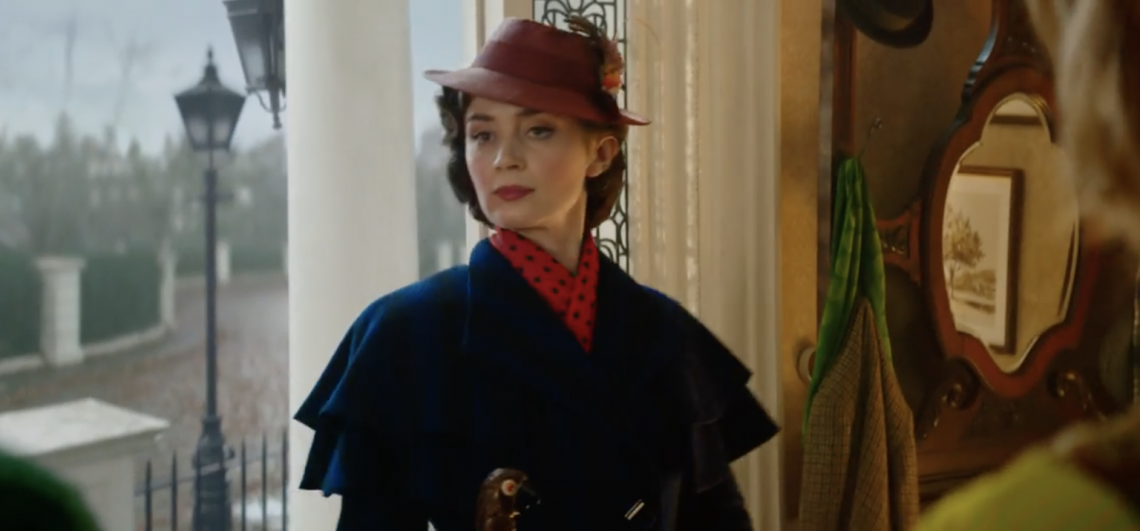 SMITH: That’s it. imagination. The thing with visual effects films is there’s always a plan. It starts with a storyboard and in some cases you shoot from that or there’s stunt vis or there’s previs, which is very important, and I try to get involved with cutting of previs well before shooting, because there are previs editors, but — like on Strange — I’d come in and there’d be these previs sequences and it’d be missing the human emotional part of it. It wouldn’t have close-ups of the characters. The fanciful bells and whistles are there, but the human side of it is not there. Or if there’s dialogue it’s usually not really represented. So the first thing I do is I take the previs and I ask for just a few close-ups that I can cut in anywhere and then I time out the dialogue and type it on the screen and suddenly that three or four minute previs sequence that everybody thinks is fantastic is — in actuality — like six minutes. “Oh! But that’s too long!” Right. Are we going to have them not speak during the sequence? “Oh no, they have to.” Because you’ve got what looks like video game people talking, the sequence loses a little bit of its dazzle, but at the same time, it becomes a lot more realistic to the way it’ll be in the film. So I very much encourage editors in those types of VFX scenes: get involved in the previs in some capacity before they shoot because the storytelling touch is often a little buried by the spectacle.
SMITH: That’s it. imagination. The thing with visual effects films is there’s always a plan. It starts with a storyboard and in some cases you shoot from that or there’s stunt vis or there’s previs, which is very important, and I try to get involved with cutting of previs well before shooting, because there are previs editors, but — like on Strange — I’d come in and there’d be these previs sequences and it’d be missing the human emotional part of it. It wouldn’t have close-ups of the characters. The fanciful bells and whistles are there, but the human side of it is not there. Or if there’s dialogue it’s usually not really represented. So the first thing I do is I take the previs and I ask for just a few close-ups that I can cut in anywhere and then I time out the dialogue and type it on the screen and suddenly that three or four minute previs sequence that everybody thinks is fantastic is — in actuality — like six minutes. “Oh! But that’s too long!” Right. Are we going to have them not speak during the sequence? “Oh no, they have to.” Because you’ve got what looks like video game people talking, the sequence loses a little bit of its dazzle, but at the same time, it becomes a lot more realistic to the way it’ll be in the film. So I very much encourage editors in those types of VFX scenes: get involved in the previs in some capacity before they shoot because the storytelling touch is often a little buried by the spectacle.
And then what’s great is having a postvis team so once I put a scene together, they can apply all their backgrounds and everything. It’s an unbelievable tool to help everyone to see how it’s starting to work and the potential questions to answer before it goes to the vendors.
The challenging thing on Mary Poppins Returns is that we had 15 minutes of 2D hand-drawn animation. Editing that sequence with green screen and proxy actors and all of that stuff was fun to do and in the technical and creative aspects were familiar and we had a good time cutting it like a big musical number and a big dynamic scary chase. But the hard thing with hand-drawn animation is that you can’t roughly visualize it. I’m not going to put in a temporary background. I’m not going to put in a little digital character to represent something, because anything you put on screen takes away from the creativity of the animators.
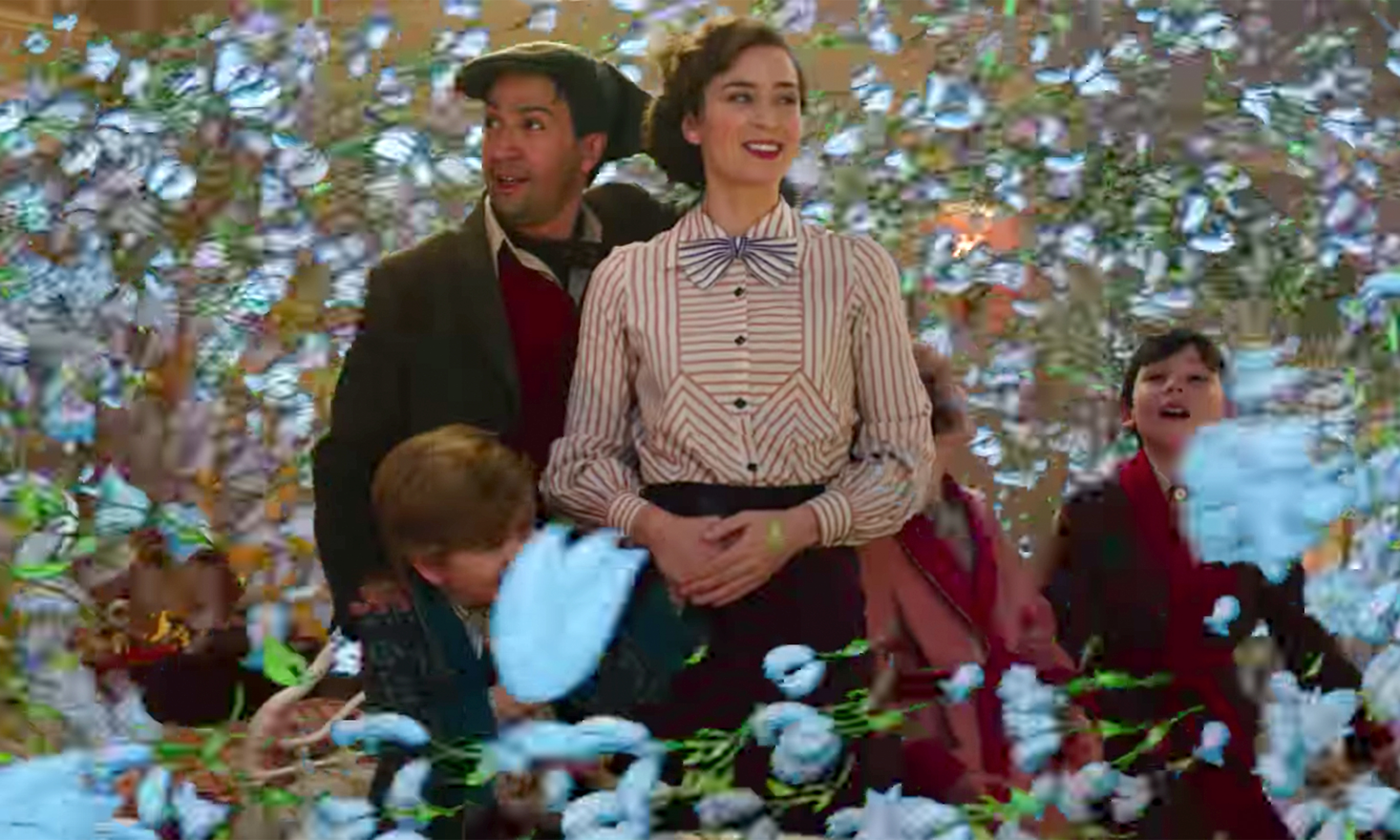 So it’s very unusual to have a green screen sequence that just has to sit there like that for a long time because any step to represent it is disrespectful to the creative minds of the animators. And also interesting in that we spent so much time trying to hone and craft performance on a film and suddenly you have characters that don’t exist. And I’m waiting months and months and months to even see the expression on their faces.
So it’s very unusual to have a green screen sequence that just has to sit there like that for a long time because any step to represent it is disrespectful to the creative minds of the animators. And also interesting in that we spent so much time trying to hone and craft performance on a film and suddenly you have characters that don’t exist. And I’m waiting months and months and months to even see the expression on their faces.
We had proxy actors on set helping to shoot the scene, then we did voice recordings of our principals to use for those characters, so you’re hearing the voice, but you’re still not seeing how they’re expressing and moving. And some of the characters have links to the real-world characters so we would provide some clips and footage of them in the real-world so we knew the mannerisms that would hopefully represent some of the actors a bit — like Colin Firth as the wolf.
The sheer joy of suddenly seeing these characters for the first time when the roughest pencil sketches came up was incredible. But it is very challenging — because it takes such a long time to draw everything — to have to let that just sit in the film as such a raw piece for such a long time, that was a very different experience and there were a lot of learning curves there, because our animation team hadn’t really worked with live action and we’d never worked with hand-drawn animation. You have penguins dancing — and I’m working with a choreographer as a director — he sees movement so precisely and getting our animators to understand the nuances of what a choreographer sees as dance and knowing that every time we give a note, they crumple up the paper and pull out a new pad and start drawing again. It was an unbelievable experience.
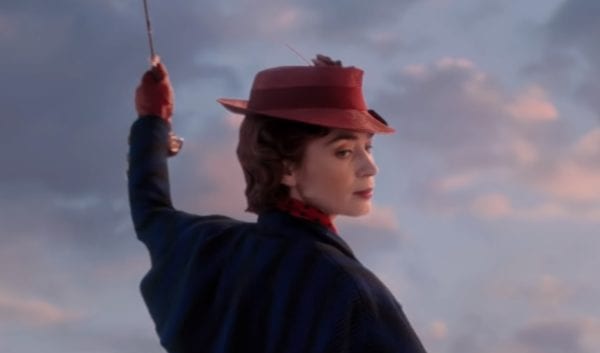 HULLFISH: I didn’t know Rob was a choreographer. What challenges does that represent for you as an editor in the way you have to look at and judge movement?
HULLFISH: I didn’t know Rob was a choreographer. What challenges does that represent for you as an editor in the way you have to look at and judge movement?
SMITH: It can be very challenging. Rob and his partner John DeLuca, who’s our producer — and they’re choreographers together — on Nine on Into the Woods and certainly, on Poppins — they are very different styles of dancers. I like to think from twenty-five plus years of editing and twelve of those with Rob and trying to look through a dancer’s eyes, that I can see things in a frame very quickly. It’s my job. But THEY perceive physical movement so quickly. I will hit play on a take and in an instant, Rob will say, “no.” And I’ll say, “What?” And literally there’ll be one dancer who’s turning his hand a certain way — amongst the eight on screen — and he’ll say, “That’s not how that’s done.” So the speed at which he can detect things is amazing.
Then, of course, there’s a reasonable part — at a certain point it’s like, “Yeah, but this is better for the person we all are looking at.” And we find that balance, but it’s amazing because when you look at a film Chicago — which just blew my mind when I saw in the theater — and you look at Catherine Zeta-Jones and Rene Zellwegger or Richard Gere and the dancing they achieve and how they come off — these are not people who’ve been dancing their whole lives. And that’s the movement that Rob and John are able to create in these actors.
They push them. They challenge them, but they also protect them. And so there’s a lot of nuance to how we cut — where it’s not just trying to get the music across. It’s not about the uniformity of steps. It’s about passion in the best performance of dance. And then letting that kind of dictate that puzzle. But what’s interesting is they carry that into the narrative work as well. Because they’re dancers there’s always movement. The cameras are rarely settled. Actors are rarely just sitting or standing around. They just view life with movement. And sometimes you want it to settle down and thankfully, sometimes it does, but it is interesting because a lot of cutting often happens because there is an uncomfortableness with some of the idle time.
That’s part of that thing we started our conversation with, where you learn what this director’s eyes see and that’s why, in a lot of those early cuts, it’s not saying that I over-cut them, but I am cutting a lot for movement as well, not just the performance of a line.
 HULLFISH: I noticed watching the trailer how much camera movement there is. How does that affect your watching of dailies? Are you thinking, “This is a great camera action. My director loves movement.”
HULLFISH: I noticed watching the trailer how much camera movement there is. How does that affect your watching of dailies? Are you thinking, “This is a great camera action. My director loves movement.”
SMITH: To a degree. Everything is story, performance, and pace. Cut the story of the scene first. Then make sure the performances tell that story best, and then make sure it’s taken the least amount of time on screen. I’ll remember if I see if there’s a perfect line and the camera was doing the perfect thing to get us to where we were trying to go. I’ll remember that and if I can work it in I will. I try to find the shape of a scene more than just cut all the little best bits together regardless of angle. Because that shape — well we’re introducing a space. When are we first seeing that wide? Are we entering with the character we are meant to follow and then showing a wide shot to show us where you are? Or is it like one of those things like: this is a whole new environment that’s important, and the environment is more important than that opening line in terms of how you establish into the scenes. So finding that shape first is more important than whether or not it’s the best for camera or the best for lighting.
HULLFISH: I’m really interested in trying to find the structure or shape of a scene as a starting point for your approach. Do you find sometimes that you can cut — knowing the shape you’re trying to create — it’s not necessary to look at every frame of every take while you’re initially building that structure? Then, once that structure is in place, it helps inform you as you THEN watch all of the takes?
SMITH: It’s interesting. I had a conversation with Andy Weisblum about that. Because I think that’s part of his approach with Darren (director, Darren Aronofsky, “Mother”). They’ll watch the assembly and then they’ll go back and Darren will then watch all of the dailies for every scene — even if they don’t change a frame in a scene. They always go back just to see if then there was anything that was missed. There have been times with Rob — like in Into the Woods, where Meryl is very dynamic and very spontaneous with a lot of what she does. I had many many cuts of the Witch’s Lament scene but that’s one where Rob just wants to sit down and watch every frame of every take and just build it from scratch again which is completely fine because there’s just so many variables that can happen.
I think, yes, sometimes it’s very obvious what the shape of the scene is. But I want to see everything. Because there are little things that cameras can catch sometimes. In Poppins — I think it’s even in the trailer — there’s a great little shift of Georgie’s eyes when the door opens and Jane and Michael are standing there: “Mary Poppins!” And you cut between Mary and Michael and Jane, but there’s this great little beat to connect on Georgie with his eyes shifting between the characters. It’s funny and it’s a little cartoony but the first film had a lot of that type of reaction. That coverage for him was meant for much much later in the scene, but the camera is on him right at the top. It was not a scripted thing. He was not told to do it. It’s something he naturally did.
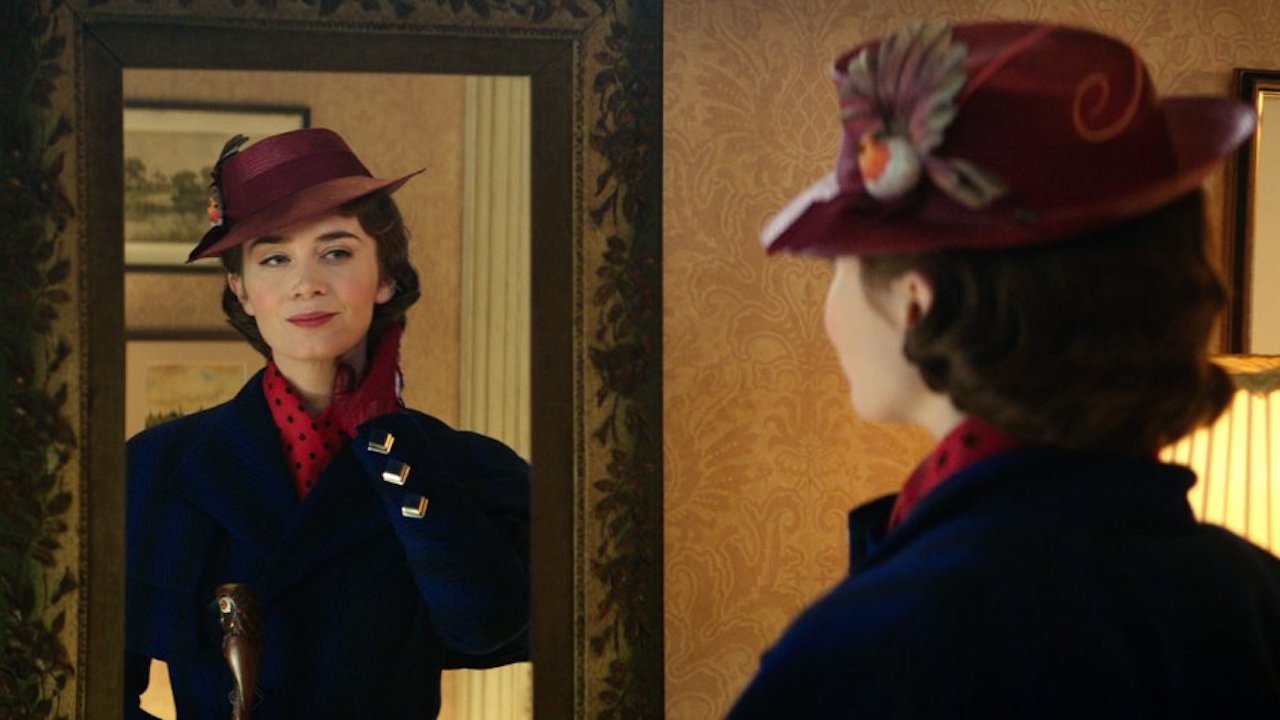 And there are a couple inside looks that Mary gives where we’re kind of in her world with her seeing how she reacts to dialogue. In the shape of the scene, you wouldn’t necessarily know to cut to them, but you have to watch everything that she does and then you see that you can build the whole scene around those looks because anytime you’re in Mary’s world it feels so special. You have to watch all the footage. Whether you watch it all first or later. It doesn’t matter but you have to watch all of it.
And there are a couple inside looks that Mary gives where we’re kind of in her world with her seeing how she reacts to dialogue. In the shape of the scene, you wouldn’t necessarily know to cut to them, but you have to watch everything that she does and then you see that you can build the whole scene around those looks because anytime you’re in Mary’s world it feels so special. You have to watch all the footage. Whether you watch it all first or later. It doesn’t matter but you have to watch all of it.
HULLFISH: You definitely have to watch it all. I was just interested in the idea of: Do you watch it all at FIRST because you see those spectacular moments that you can then build a scene around? Or do you build the structure of the scene — and now that I know the structure — my viewing of the dailies will mean more to me because I know the structure?
SMITH: Well it’s true. There are scenes where you watch all the dailies, you cut the scene, and then you end up watching all the dailies again. That certainly happens a lot. I kind of like knowing everything I’ve got before approaching it. I wouldn’t feel comfortable just starting to put shots together. There are times I’m asked to do that, where a director may say, “I’m not sure about this, or do we need this?” And it’s something they shot last night. So I’m just scrambling to quickly put together any rough version of it to see if there’s challenges or problems or if they need something. I react badly when I have to do that because now I’ve created something and I’ve discussed it with the director and I know that it’s not really necessarily representative but it’s in his or her head and can’t be unseen. It’s not my thing. I don’t like it.
HULLFISH: Can you tell me about cutting these two scenes: “Mary Poppins sing for us” and the other is “Royal Doulton Bowl.” Anybody who has read any of the Art of the Cut interviews about animation editing knows that the editing is usually done before the animating by — sometimes — years.
SMITH: What’s exciting is Ovi – who’s the animation storyboard artist for Mary Poppins — as opposed to Nick, who did storyboards for the film — was nominated for an Annie for his work.
What happens is: they would do an animatic — an animated storyboard sequence. This is before my time on Poppins as I was still on Dr. Strange. So they created this animatic to a rough audio track of Mark Shaiman singing at the piano. It’s a very, very interesting thing to watch, but it’s kind of magical. Then Rob, who believes in intense rehearsal processes, would shoot rehearsals on phones. The animation team then took their animatic and some of these rehearsals — of the dancehall number for instance — and they intercut them and worked that through with Rob. So there was a very good template by the time I came onto the film for sure.
As soon as we started post-production we prefer to work linearly through the film, but we can’t. So the Royal Doulton Bowl, for instance, I cut that together and then I worked with Rob over two or three weekends to make sure that we felt really good about it and that was something that we turned over to animation while we were filming. That happens all the time on the big VFX films where you have to get the scene to a place where you feel fairly confident Lon edited you’ve seen the full film. And in the case of animation, you have to feel VERY confident because it’s so long until you get it back. Anytime you make a change it’s a big deal.
Also, on the more technical side, with animation, you get no handles. Especially with music, or dance: Oh you know what? Now that I’m seeing what the background and the environment looks like, an extra two frames would make that great. In the normal world, you’d have a minimum of eight frames of handles. With animation: nothing. So any time we want to add frames, they have to go and draw them. Thankfully we do the pulls for them long, so at least the footage is somewhat there for them to work with, but they have to go off and draw them. That’s a bit of a learning curve. You have to be so confident in what you’re handing over, and your imagination is filling in what’s there. You really have to kind of dream the take because if four months from there, we add a shot of animation, assume that it could be a month before you even see a representation of that shot. Thankfully, we had a long post process so it all gets done and it’s done beautifully, but that was definitely a learning curve on working with the animators. You have to respect that it takes a lot of time to do this artistry. And just have complete confidence in what we’re turning over because — you can change it and some things we did have to change — but you’re really putting them against the wall.
HULLFISH: What about this “sing for us” clip?
SMITH: That’s when we’re now in this raucous musical. Whereas the Royal Daulton Bowl started off as a very traditional 2D animation process — it feels very flat with traditional multi-planing. And because we do the multi-planing digitally, you can have hundreds of layers of background parallax and all this stuff. Whereas in the old days it was only something like four or five. But it is all truly hand-drawn. Then, when you get to the music hall at night, the real challenge of merging of worlds there was not so much having live action with animated characters — it’s having a theatrical musical. That means theatrical lighting. If you look at a film like Chicago, that’s really theatrical lighting. Really showing a lot of old school tricks of how theatre lighting works.
So for that, all the audience and all the characters are hand-drawn, but the stage itself was actually a digital set with hand drawings projected on i, so that we were able to move the set with the camera. It has to be dynamic and wrapping and have all that energy of a dance number. But really the main reason we had to go quasi-digital on that was due to lighting. All those pin spots and accent lights.
It’s interesting, once we shot the green screen elements for that number, Dion Beebe, our cinematographer set up a very wide shot and sat there with Rob, filled the room with smoke, which you don’t do with green-screen because it affects everything. And, without any actors on set, did all the lighting cues and follow spots as if it was in a Broadway theater, and that became this incredible reference for the theatrical lighting, so that sequence becomes very complicated in many technical ways because you want it to feel like a Broadway stage show. So there was a lot of technical wizardry at play and a lot of dynamics to it, so that moment of: “Sing for us! Sing for us, Mary Poppins!” where we found her in the audience — that’s where that theatrical performance starts.
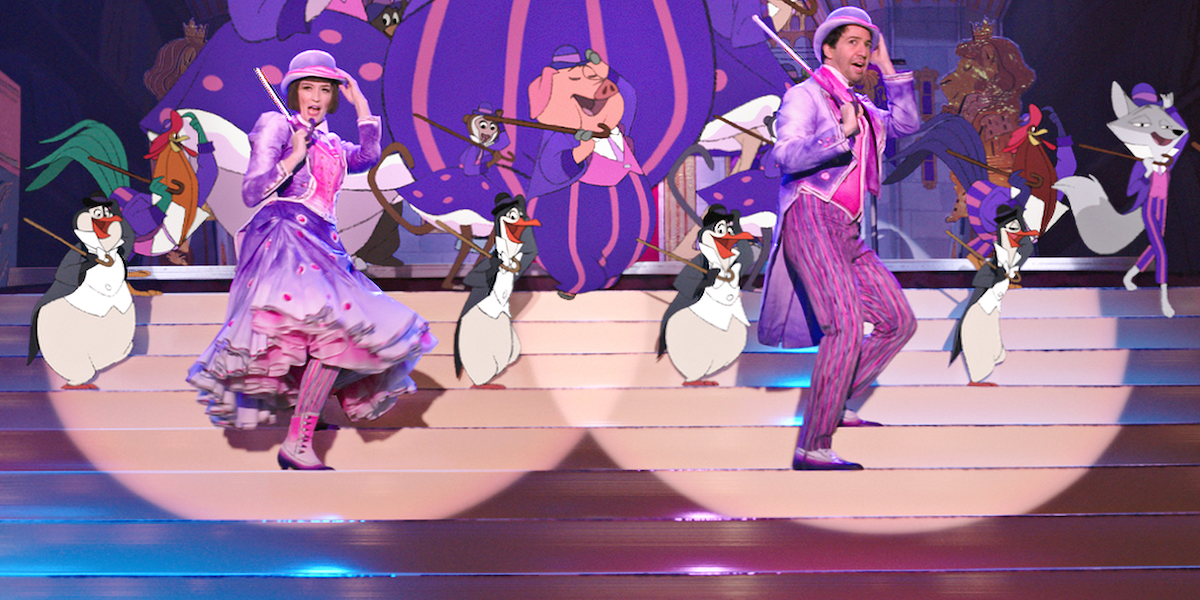
It starts right in that moment where the houselights go down and suddenly a pin spot comes up on Jack (Lin-Manuel) right on stage and suddenly you are in a theatre show. It’s not a simple sequence, but it was always fun to cut. Every time the animation updates came in, suddenly there’d be three more characters sitting behind them doing crazy things and sometimes we had to tone them down. It’s finding that fine-line with animation to not be cartoon-y.
HULLFISH: One of the last times I talked to you, you were working with Sabrina Plisco on Doctor Strange. You also mentioned that you’ve edited with Claire Simpson (Oscar winner for editing Platoon) and David Brenner (Oscar winner for Born on the Fourth of July). On this film, you certainly had a team, but you were the sole editor. Did you miss having a coeditor or was it nice to be by yourself?
SMITH: I don’t miss having a coeditor because Rob is so hands-on. John DeLuca’s in with us a lot as well. But Rob is with me every day. He has fairly set hours that he’s with me, but they’re not short hours, so I have a collaborator that I’m cutting with and talking to. Rob’s not that type of director where I’m going to just cut some stuff and present it to him. He likes to sit there and do the work with me. Interestingly enough, Kasi, who I’m working with right now is the same way. I respect directors either way: if they choose to be there or if they want to give me the space. Sometimes I’ll just ask for it. I’ll say, “Give me a day.” In the case of Rob, that’s what a lot of those early mornings are: putting together all these alternates so that I have things to present. I love the collaboration.
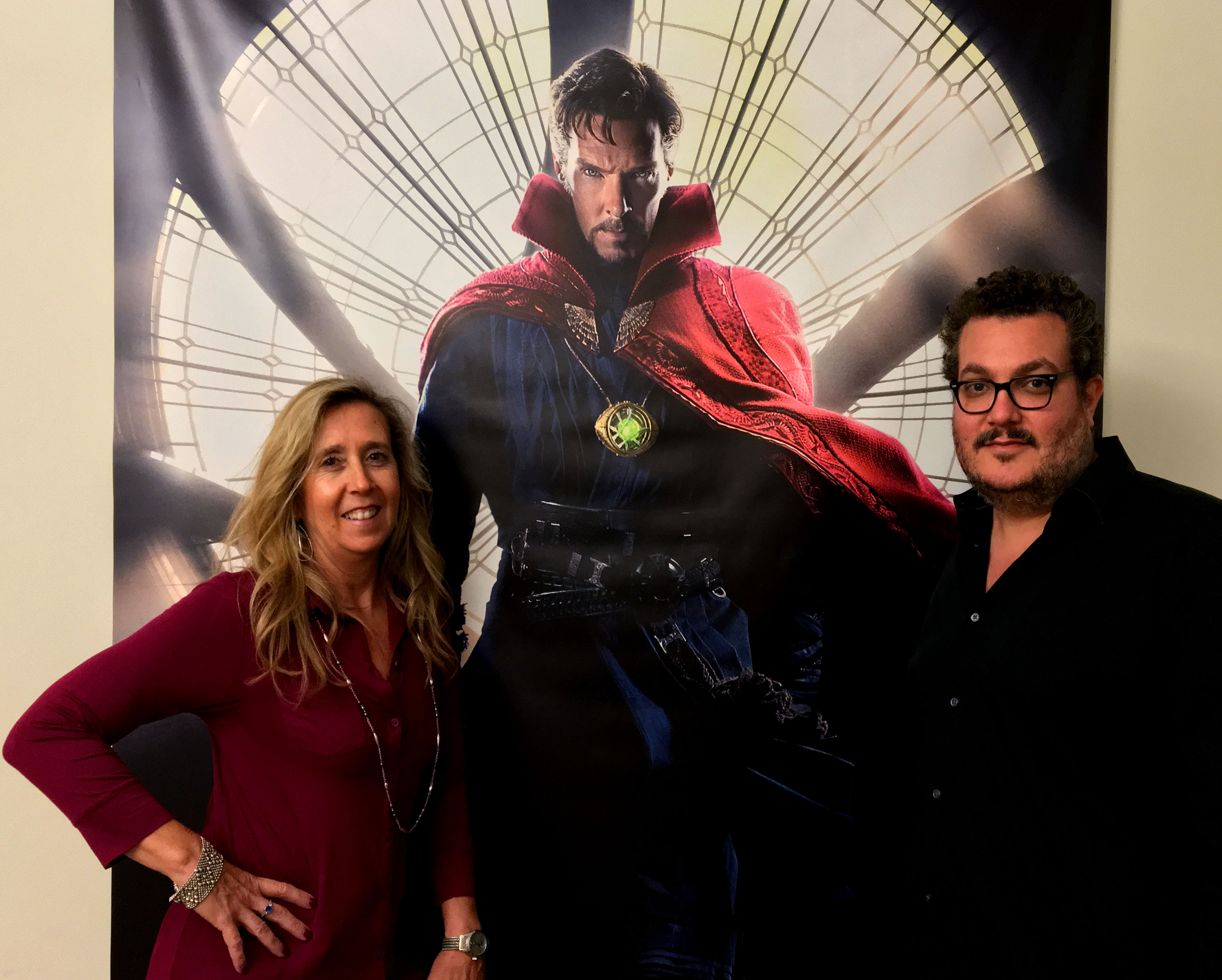
Sabrina surprised me in so many ways. She’s a great editor and I thought it was important to have a female perspective in the cutting room on Doctor Strange. The added bonus is that Sabrina is fantastic with action, and starting with Sky Captain, she has tremendous visual effects experience. So she was such an incredible resource and partner on that film. But what was great with Sabrina was we divvied up the work: what she would be cutting, what I would be cutting. There were certain scenes where I wanted us both to cut them, to see what we would discover. What was great is when we finally presented an assembly to Scott Derrickson, (the director), we had had so much dialogue about the story and performance of the film that we presented a cut that was so much further evolved than if it had been something that I just solely put together by myself without that bounce. That dialogue was hugely important.
When I worked with David Brenner It was a little different than that in that we had kind of split up the scenes and it was all happening so fast and furious. We’d show each other stuff before we ever presented it to Rob, but we didn’t really have that much time to adjust things.
Working with Claire, she would work on narrative scenes with Rob and I would work on the musical numbers with John and then we’d all sit together and actually weave the narrative and the songs together. So the processes are all different, but I do love the collaboration. Having multiple editors on films, especially the big films, makes complete sense to me.
It also teaches you good things about ego. I’m just going to be completely honest about that. Of course, you’re thinking, “I know I can do this myself,” but you know what? You can do it better when you’re with someone. it’s not all about the glory of your own name in lights. So I’m grateful for all the collaborations I’ve had. I’ve learned things. I’ve seen different approaches, different styles, and most importantly, it gets you out of that headspace where you always think what you’re doing is right.
HULLFISH: That’s an awesome point.
SMITH: I try to remember that even on a film, like I’m working on now as the sole editor. It’s a new language. A director I’ve never worked with. We’re getting on great, but I’ll tell her, “Just so you know, I’m going to say a lot of things and I’m going to be passionate about it, but I don’t know if I’m right. This is what I feel. and it might not be right. An audience may say something completely counter to something I’m very passionate about, but that’s the process.”
We all think we’re right, but we don’t know. Only an audience is going to tell us if we’re doing our job correctly.
HULLFISH: Let’s talk about the clip “Can You Imagine That?”
SMITH: That’s a very fun musical number and it’s Mary’s first song in the movie. And an important thing about Mary Poppins Returns is that it’s mostly told from the perspective of the children. You’re watching the movie through their eyes and you’re also making a movie that’s meant to be seen and enjoyed by children — but also has a lot of heart and a lot of meaning to adults who have lost that child inside of them. It’s about finding that again. it’s a very hopeful film. So Mary’s first number is obviously very important to get right. Georgie is the one who discovers her in the park. She arrives on his kite string. He sees Mary for all the wonder and magic that she is immediately. John and Annabel are skeptical, and bit by bit they have to get won over. To them, they don’t think they need a nanny.
I love that bathroom sequence because not only is it Mary’s first song, not only does it have an incredible entrance where the song comes in seamlessly out of the dialogue, but there’s this fun stage that she’s setting. She throws a pail in the bathtub. She drops some coins in. She drops a toy pirate ship in, but none of these things are on the water’s surface. They all sink down. She’s setting the stage for this wonder that you don’t really have any idea of where it’s going to go. And then suddenly, one by one they plunge and then you realize you’re in this underwater magical ocean and suddenly the pail that she threw in is 50 feet high and the toy ship is now a pirate ship. So there’s a lot of fun and wonder to that.
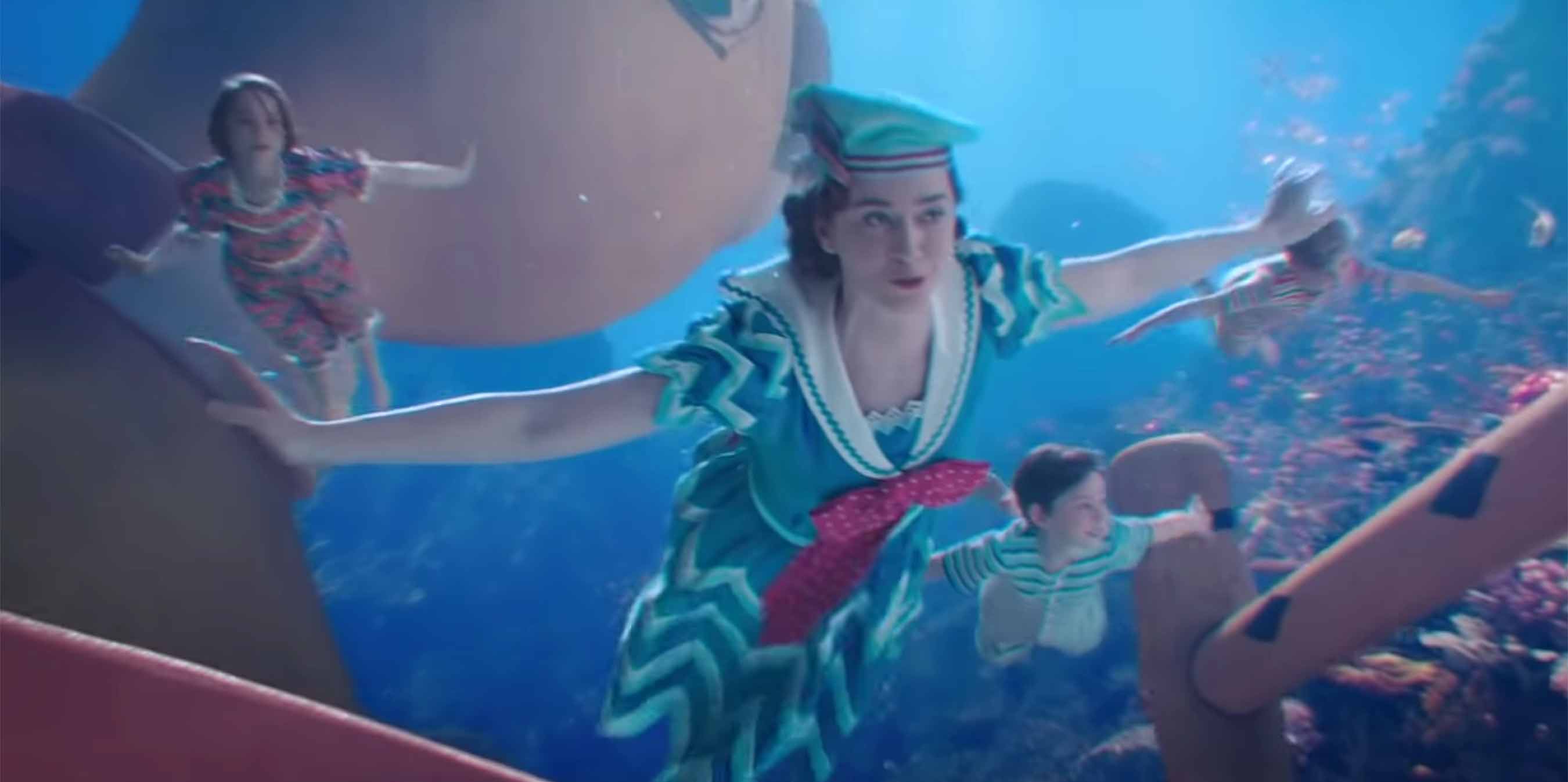
There are a lot of technical difficulties to that sequence. When they first go underwater it’s a fantasy, so everybody’s not wet. We’re not trying to play it like it’s really underwater. But at the same time, if it was just a normal 24 fps sequence it would look a little too weird and fake. So we actually shot it as a high-speed sequence which meant that Emily Blunt (Mary) had to sing the track at a high speed so that when it’s slowed down, it’s in sync. It’s a Mark Shaiman composition so it’s complicated in a brilliant way. There’s so much detail to it and there’s so much wordplay and Emily has to be on wires, on a green screen having to sing the track at twice the speed almost. Thankfully, we had a playback system that could play it back at the proper speed right after the take was shot. So that was very helpful for Rob to see how that was all working because it’s such a strange process.
HULLFISH: Do you remember the actual frame rate that they shot?
SMITH: It wasn’t 48fps.. That would be ridiculous. I think we went with 36fps.
HULLFISH: So for people of my vintage, they might remember The Police “Wrapped Around Your Finger” music video.
https://www.youtube.com/watch?v=svWINSRhQU0
They sang sped up and played back and slo-mo.
SMITH: It is effective and it helps that sequence. The cloth and hair all just has a little bit of that underwater magic to it while they’re clearly not soaking wet at all.
And there’s so much detail to that particular sequence. Up in the bathroom, before they go in the water, I loved that our sound designers — Rene Tondelli and Eugene Gearty — as Mary is waving the toy ship around, you’re hearing the bow-wash of that ship on huge waves. It’s done musically because all of the sound design has to work with the music, not fight the music, and it’s just this nuanced little layer, and I don’t even know how many people pick up on it, but all those little types of details just make it that much more fun.
HULLFISH: What about the scene “Mary Poppins Arrives?”
SMITH: So that’s Mary’s arrival into the film. What’s fun about this is the first 20 minutes of the film, we are waiting for Mary. The film opens with “Lovely London Sky” which is a kind of very pretty pastoral ballad that Lin-Manuel sings, which introduces him. It introduces our world of Depression-era London. And he’s talking about a lovely London sky, meanwhile, It’s grey, it’s the Depression, which was called “the slump” in London. So it’s kind of set in this dark period right at the top of the film. We try to recover some of the energy of that with a big title sequence. A big orchestral overture which is incredibly important to the film because that starts to teach you all the musical themes that are going to come up throughout the film, so that when songs start to appear they’re familiar: “Oh I’ve heard that tune before” which is really what overtures served in classic musicals. Which is why Rob was adamant that there’s going to be an overture, so then we had to decide, would it be the first thing in the film or would it be after the opening number?
Then you meet the Banks family and they’re in complete disarray. The bankers show up saying they’re going to repossess their home. Michael retreats to the attic to look for this missing document and finds his late wife’s necklace and sings this absolutely heart-wrenching song about the struggle to raise his children alone without her. It’s devastating because Ben Whishaw is so good.
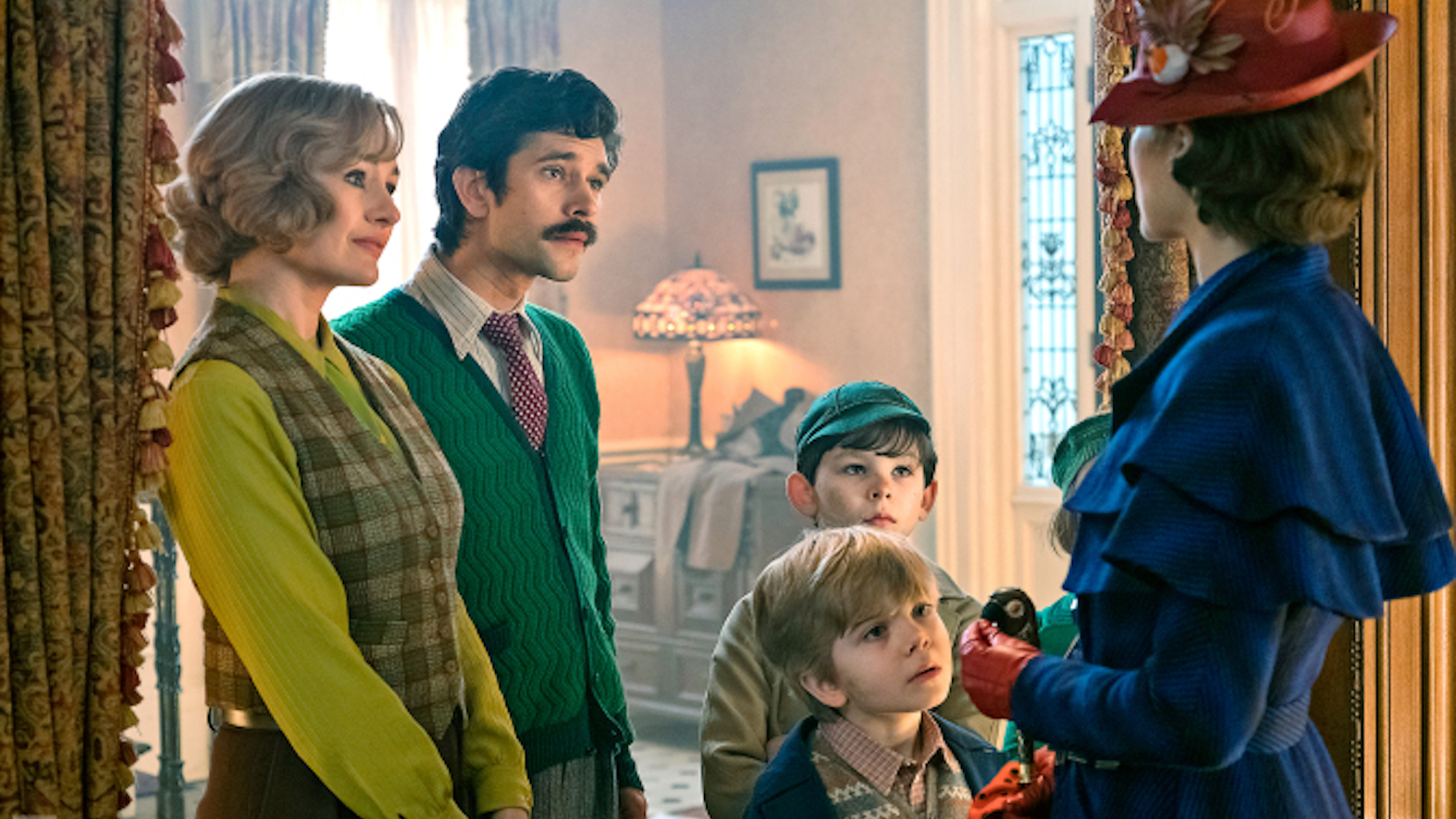
But for Mary’s arrival, we decided we wanted an action sequence. It could have been this charming thing where it’s all sprightly and magical and then Mary’s in the sky, but we’re like, No! This needs to be a violent storm and this big, thunderous change to show that the movie — from here — is going to be completely different. Joel Dawson, who plays Georgie, his face is incredible in that sequence. He’s so intense when he’s struggling with the kite and all of that. But we really leaned into it as we would with an action sequence.
So suddenly when you get the big chord and the clouds part and there she is, you’ve had all this noise and you’re ready for silence and to hear every word she says. A lot of it is also how we’re defining Mary in the film. And Emily Blunt’s Mary goes a little closer to the P.L. Travers books. Julie Andrews is iconic in this role and it’s a huge weight for Emily to have to create HER Mary Poppins, which I think she does absolutely brilliantly, but it’s a little sharper. She’s a little bit meaner and stricter, which is a bit more in line with the books.
So having this kind of intense sequence helped also set this tone, where, yes, she’s this magical person, but it’s not unicorns and rainbows. There’s an edge here. It’s hugely important because it defines Mary.
HULLFISH: What about the scene, “rummaging through the attic”
SMITH: You’ve seen Michael downstairs. Clearly, everything’s crumbling around him and he is about to lose his home, but he’s not displaying it on the outside. He’s internalizing it all. Meanwhile, he has one week before he loses his family home and he and his three children are out on the street. The fact that he’s a painter but he’s had to take a job at a bank as a teller is the antithesis of a creative person to become a banker. So you really feel the darkness of the times, so that song in the attic is really powerful.
We weren’t sure if it was going to be too hard for the audience to take such a heavy ballad right at the top of that film. We know that as soon as you sit down you’re watching the clock until Mary shows up. In the original film, Mary doesn’t show up for 20-something minutes either.
HULLFISH: I seem to remember that that film starts kind of dark and stormy.
SMITH: Yeah. It’s a short sequence with the nannies all getting blown away through the street before Mary arrives. So it’s a similar type of idea.
It’s great to see the audiences really respond and feel for him in that attic scene. Even if you’re not a parent you can feel the desperation. I also just love that attic set. It’s like my dream attic, just cluttered with stuff.
We didn’t want to overdo the homages and references to the first film. Even musically, there are only a few spots that we put in some of the original themes. What’s fun in the attic, is that’s where the kite is from the first film. It’s where the snow globe is from “Feed the Birds” in the first film. And then there’s also little easter eggs too, like when Mary Poppins rearranges their bedroom in the first film, there are all these wood blocks that spell their names. Those woodblocks are in a box in the attic set, on camera.
HULLFISH: So, you mentioned that the audience is basically sitting there with a stopwatch, thinking “Where’s Mary Poppins?” But it is so critical for the audience to care about those characters that you have that time at the top without her.
SMITH: Yes. Especially because — I said the film is told through the perspective of the children primarily — but in a weird way the story is really most about Michael Banks, Ben Whishaw’s character. The kids start out as little adults. They’re trying to keep life in order because their father can’t. And they have to remember to be children again by the end. (SPOILER ALERT) That’s an easier journey with Mary and she gets them there kind of quickly. They do get broken down in the middle where they miss their mother after a nightmarish chase animation. But Michael is the last one to believe. He’s the last one to find that joy again. And you know it’s interesting because one of the challenges of working on the film is the perspectives because there are things that have to exist for the adults and the children in the film and in the audience.
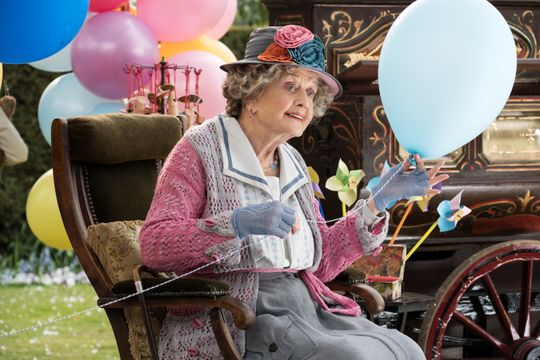 The whole thing is Mary Poppins is going to leave when the door opens. At the end of the film, a wind comes and a door blows wide open and Mary leaves. The kids in the film don’t quite realize that that’s the cue for Mary to leave, but the kids in the audience get it. Right before that door opens — after this wonderful, joyous balloon number that Angela Lansbury sings — Michael Banks finally realizes that all of this about Mary Poppins is all true. Just before the door opens, Michael says, “I haven’t felt this much joy and wonder in years. I thought that door was closed forever.” That — Michael’s feeling — is the door that really opens so that Mary can leave.
The whole thing is Mary Poppins is going to leave when the door opens. At the end of the film, a wind comes and a door blows wide open and Mary leaves. The kids in the film don’t quite realize that that’s the cue for Mary to leave, but the kids in the audience get it. Right before that door opens — after this wonderful, joyous balloon number that Angela Lansbury sings — Michael Banks finally realizes that all of this about Mary Poppins is all true. Just before the door opens, Michael says, “I haven’t felt this much joy and wonder in years. I thought that door was closed forever.” That — Michael’s feeling — is the door that really opens so that Mary can leave.
We debated taking out the physical door opening. I felt it should stay because little kids need that. Adults will understand that that’s not the door that’s opening. It’s really this mental door that brings back the child in Michael. That’s just one good example of places where you have to make sure it works on multiple levels for a young audience and for an adult audience. And the dream is that this resonates enough with children who see it now that years from now — when they’re adults and have children of their own — and they show this film to their children they’ll realize the symbolic meaning. (END SPOILER ALERT)
HULLFISH: You mentioned Michael is internalizing a bunch of stuff, which means there’s subtext: he’s saying one thing but the audience somehow knows that what he’s saying is not what he’s feeling. How do you edit for that subtext?
SMITH: Easily, because Ben Whishaw is about as fine an actor as the world will ever know. The American audience doesn’t know him that well. He’s Q in the new Bond films. Some people are fortunate to have seen him in theater and know how good he is there. But the fact is, he’s such an incredible performer. His eyes tell you everything.
 And it’s just about showing just little bits of cracks. It’s like he gives a few coins to his kids to go buy groceries and they walk out the door and just holding on him — on a shot of his face — and you see he’s playing it with a smile and then he just drops that little bit — right towards the end of the shot — and it shows that it’s not right. He knows he didn’t give enough money. He knows he just heard that they’re going to lose their house, but he’s trying to hold it together and he does a good job in front of the children. But then, you just see those little slips. It really comes from his performance. There’s nothing I can do other than just make sure he’s on screen for those moments.
And it’s just about showing just little bits of cracks. It’s like he gives a few coins to his kids to go buy groceries and they walk out the door and just holding on him — on a shot of his face — and you see he’s playing it with a smile and then he just drops that little bit — right towards the end of the shot — and it shows that it’s not right. He knows he didn’t give enough money. He knows he just heard that they’re going to lose their house, but he’s trying to hold it together and he does a good job in front of the children. But then, you just see those little slips. It really comes from his performance. There’s nothing I can do other than just make sure he’s on screen for those moments.
HULLFISH: That’s my point. I completely understand that the subtext is so much delivered by the actor, but it’s also you protecting and being a steward of the actor — seeing that moment where the facade slips — that’s the key to the scene and of the performance. You can’t shortchange those.
SMITH: No. No. And much the same way, digging out that little moment where Georgie shifted his eyes in that same scene. In that same scene, there’s an amazing reaction of Mary. She shifts her eyes up towards Michael and you can see she has a plan, she sees what’s still circling inside of him. He’s denying that it ever was that way. Those are those little moments. It’s not something that the dialogue on paper is telling you to cut to. Those type of reactions are everything to this film. She only did that in one take, so you’ve got to make sure you’re watching everything. I don’t remember if it was a circled take, though with Emily, practically
everything is a circled take.
 HULLFISH: Last question for you. What’s your approach to an empty timeline? What’s your approach? Are you a selects reel kind of guy? Do you pop in locators? Do you handwrite notes?
HULLFISH: Last question for you. What’s your approach to an empty timeline? What’s your approach? Are you a selects reel kind of guy? Do you pop in locators? Do you handwrite notes?
SMITH: I don’t think it’s been the same process from one film to the next. It’s interesting as I’ve now had 10 years of features. I see how I organize projects. When I’m screening footage, I make these string-outs that are almost like KEM rolls.
I found there were times that all I would do is immediately clip selects and then any time I saw an amazing bit I would clip it out — and that’s where I was trying to create these kinds of Frankenstein things where I was taking all of what I thought was the perfect moment of all these takes and figuring out how to jam them together.
I don’t do that anymore. Now I watch all the material. I rely on memory or locators to mark where there was a particularly special moment or something like that. But most importantly to me is to cut the shape of the scene in terms of where we’re close on our actors where we’re wide, where we’re carrying movement in a camera, where I need a reaction more than I need to see someone on-camera saying a line. I create that shape. Then I go back through, rechecking the performances for that shape. And then, if there’s anything I might have put a locator on — like a special moment that just was very unique — then I figure out if it has a place in the scene. I find, for me, that’s telling the story of the scene correctly. I know that the story’s coming across strong. Rob is all about performance, of course. Most directors are, but because he used to be a performer, he’s extra attuned to his actor’s performances and the risks they take.
So part of the cutting for Rob is he loves close-ups. He loves dialogue on camera. So also a bit of the work is dictated by who you’re working for.
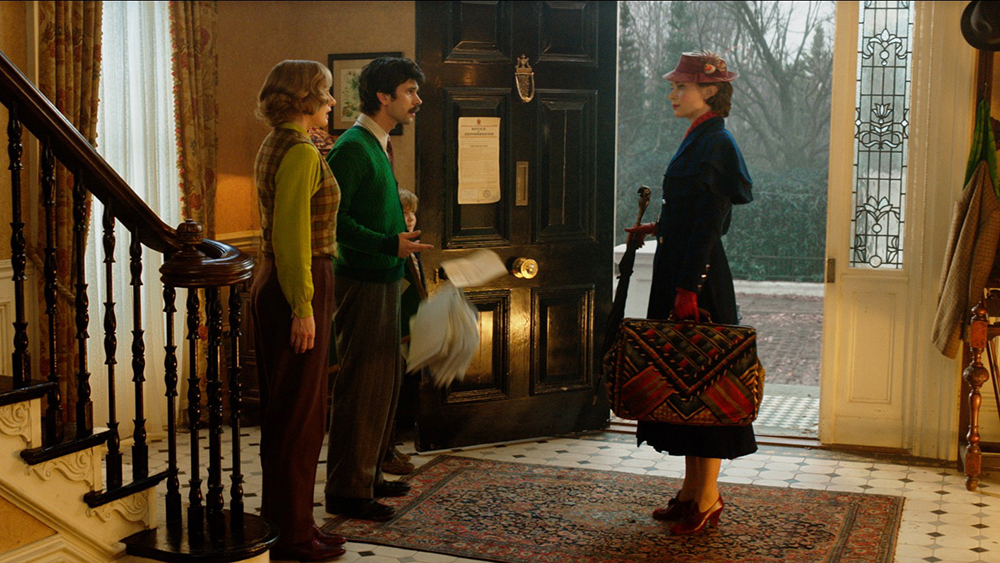
HULLFISH: I love the idea that you had those moments that you thought were great when you were watching dailies, but you only went to see if you could work them in AFTER you’ve got the scene together. You’re not trying to force them into the scene. You’re thinking, “Can I get them into the scene without compromising the scene for your “darlings?”.
SMITH: Right. Now there are also exceptions. In the animated sequence in the Royal Doulton Bowl, Mary leads the way and they all slide down this hill. Georgie is the only one who’s supposed to fall and gets scolded for it. There’s one take where — because it was fun and the kids were loving it literally — Nathaniel slips and falls and then Georgie falls and they all tumble and everybody starts laughing. Thankfully. Emily Blunt is ALWAYS in character and she plays it. So as soon as I saw that, I know from Rob and John that those little happy accidents — that are so much fun and it’s so real, where it’s not like a planned fall, suddenly there’s this whole calamity of stuff and there’s such joy from the kids because they’re just having a good time — to NOT put that on camera is a crime. That’s a case where I’ll see something and say “That’s the thing that has to be in the film because it’s real. It’s the joy.”
I think it was Sidney Lumet who said, “All great work is preparing yourself for the accident to happen.” So those types of things — that’s magical stuff. In Into the Woods, there’s a fantastic moment where you find things in “pre-action.” Something happened on set and they had to hold the action, but the cameras were rolling and Chris Pine’s furiously pacing back and forth waiting for “action” to be called, but then there was a moment in the scene where we’re waiting for these ladies to come out of this house and we thought we should come to Chris and I remembered I had this fantastic shot of pacing furiously. And it wasn’t even supposed to be part of the scene or that the cameras were even really supposed to be rolling. You have to watch everything.
HULLFISH: And by “everything” that story illustrates even pre-“action” or post-“cut.”
SMITH: I learned recently that in Casablanca one of the most iconic shots in the film is when she has just completely drifted off into space before she hears the song and he walks in the door. That, I learned, was pre-action. She was sitting there trying to get herself prepared for that moment and the camera rolled on her. I love stuff like that.
HULLFISH: I’ve kept you an incredibly long time. I just found amazing nuggets in what you said. I am so glad that we had a chance to talk. Thank you so much for your time.
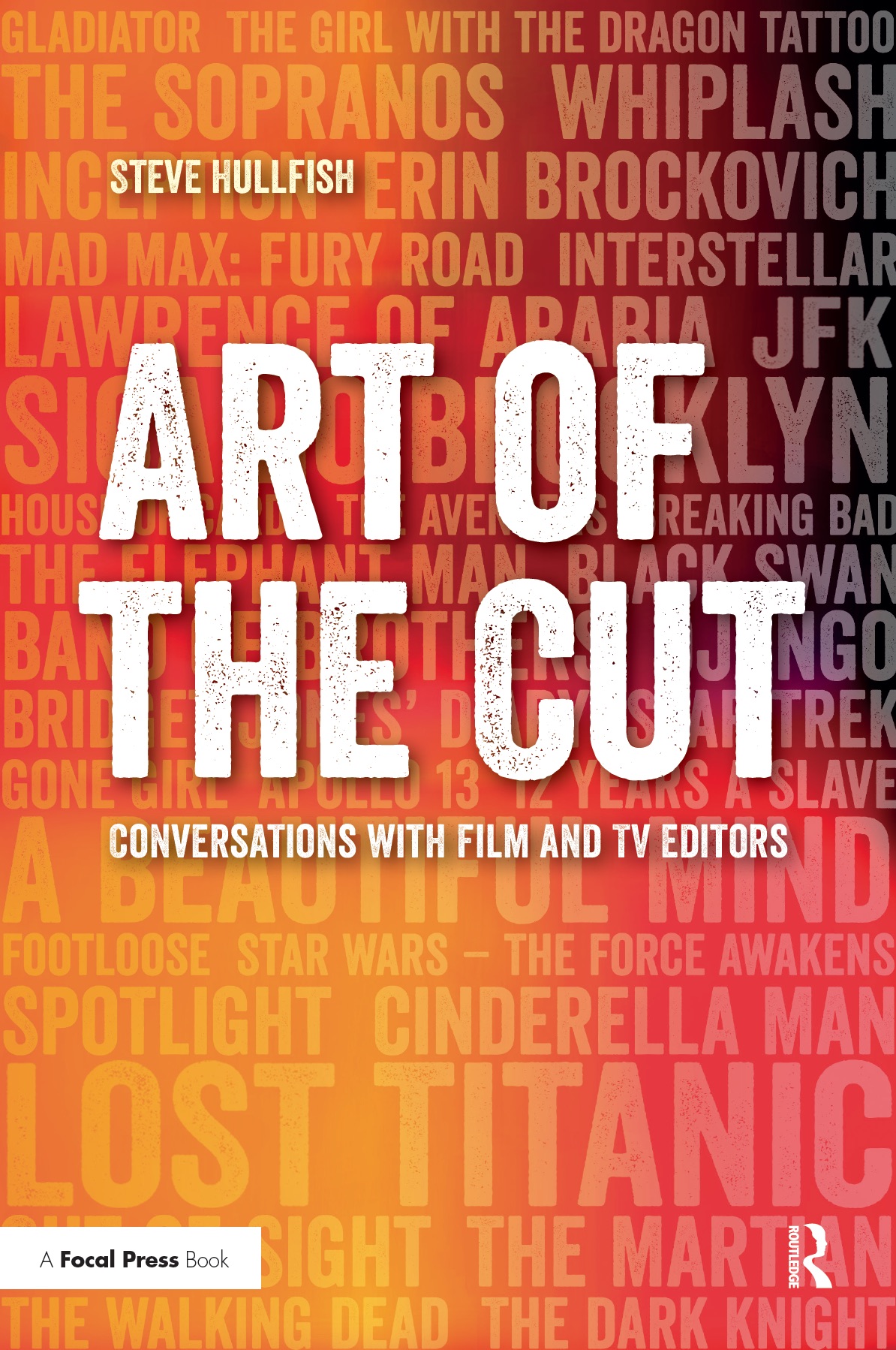 SMITH: Take care and good luck with your film.
SMITH: Take care and good luck with your film.
To read more interviews in the Art of the Cut series, check out THIS LINK and follow me on Twitter @stevehullfish
The first 50 interviews in the series provided the material for the book, “Art of the Cut: Conversations with Film and TV Editors.” This is a unique book that breaks down interviews with many of the world’s best editors and organizes it into a virtual roundtable discussion centering on the topics editors care about. It is a powerful tool for experienced and aspiring editors alike. CineMontage and CinemaEditor magazine both gave it rave reviews. No other book provides the breadth of opinion and experience. Combined, the editors featured in the book have edited for over 1,000 years on many of the most iconic, critically acclaimed and biggest box office hits in the history of cinema.

Filmtools
Filmmakers go-to destination for pre-production, production & post production equipment!
Shop Now